
Happy Thanksgiving week to those of you in the States!
The respiratory season is mild but starting to heat up. On an individual level, this means your probability of getting sick at Thanksgiving is lower than previous four years! Woot woot. On a population level, social networks are opening (hello, family), and colder temperatures are here, which means that if we let viruses spread, they will springboard into exponential spread.
Here’s a State of Affairs so you’re well-equipped for the holiday week of travel and family.
Influenza-like illnesses: Low but increasing
The climate of respiratory health in the United States—which the CDC defines as “influenza-like illnesses” (ILI)—is increasing but still below the “epidemic” level threshold. By the shape of the curve below, it seems we are on the precipice of exponential spread.
We have returned to pre-pandemic patterns, closely tracking the 2019 respiratory season (light blue line).
The South and Washington, D.C. are starting to heat up with low to moderate ILI levels. Eventually, this entire map will be red and purple. If you’re traveling to these states, you have a slightly higher chance of getting sick, but nothing dramatic.
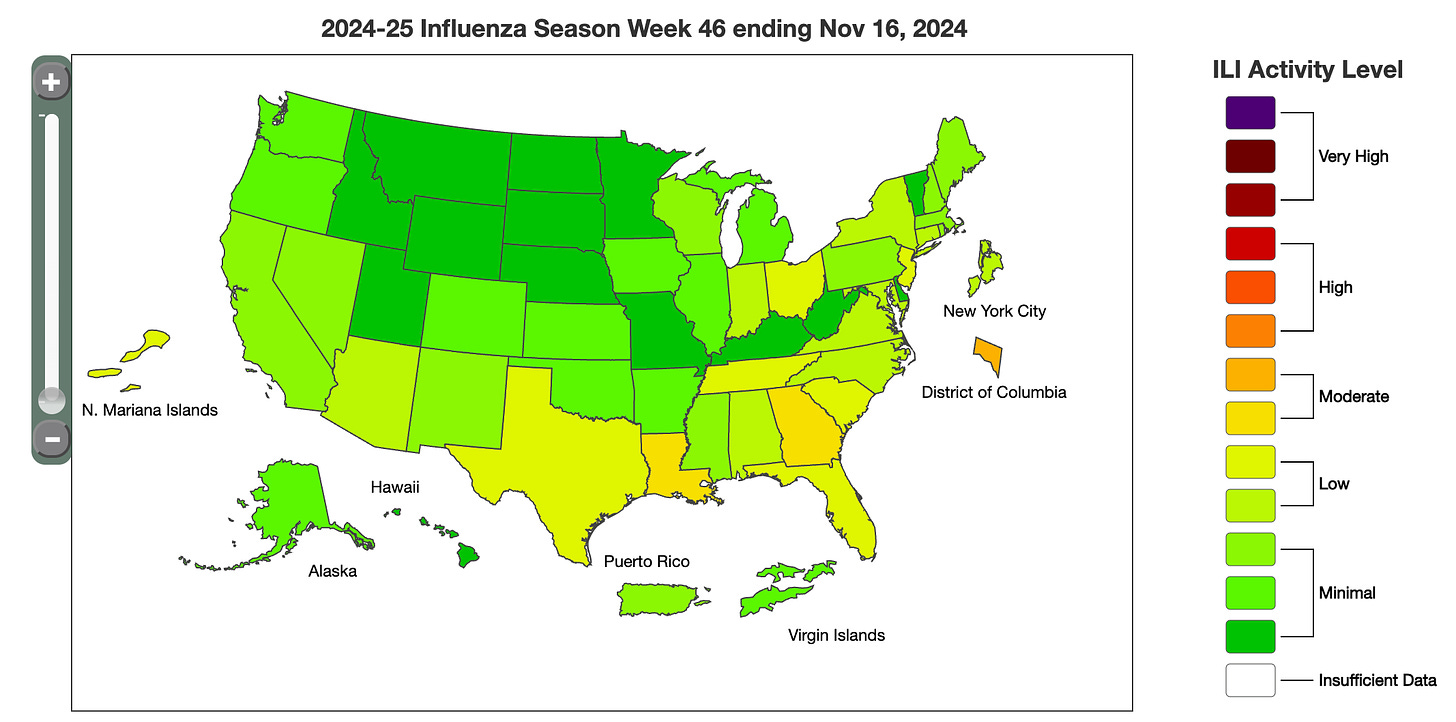
Now let’s get into more specific viruses.
Common cold: High
If you’re sick right now or someone shows up sick on Thanksgiving, it’s most likely the common cold. Two viruses, enteroviruses or rhinoviruses, are, well, common right now.
If a cough has lingered for weeks, mycoplasma pneumonia or “walking pneumonia” is likely the culprit. Cases are typically mild (hence the name “walking”), but because bacteria cause the disease, antibiotics can help. The U.S. usually gets a surge every 3-7 years, and thus far, cases have been about 10 times higher this year than last year.
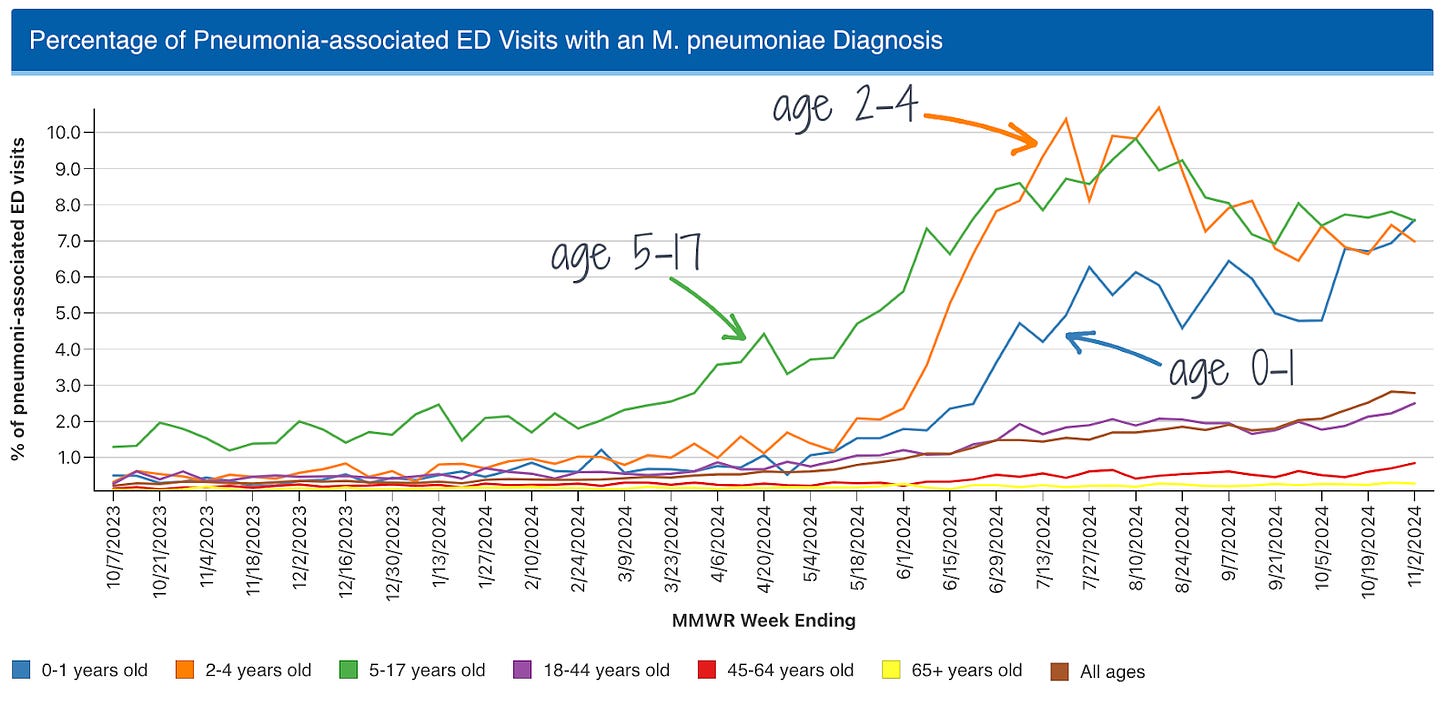
Influenza and RSV: Low but increasing
Positive flu tests among physicians testing for respiratory illness are increasing slowly. However, RSV seems to be in full swing with a wave well underway.
Children under 2 are at highest risk for RSV, especially if they don’t have protection from the maternal vaccine (during pregnancy) or monoclonal antibodies in infancy. If I were a mom of a newborn, I would keep my children close to me during Thanksgiving instead of passing them around for kisses. If you want people to hold the baby, asking people to wear masks is a great middle ground.
Children are also at risk for the flu. Levels are slowly increasing among kids, and CDC reported the first pediatric flu death of the season. Last year’s season didn’t get much attention but was the second most deadly flu season in two decades. Sadly, 80% of children who died and were eligible for the flu vaccine were not fully vaccinated (for their first flu season, children get 2 doses 1 month apart.)
Covid-19: Very low
One virus that is not on my mind this Thanksgiving is Covid-19. Can I get an amen? Wastewater levels—a good proxy for community transmission—are incredibly low across the entire United States. Given new variants, Covid-19 levels will likely start increasing soon.
Low levels of Covid-19 mean that if you’re symptomatic, you could pull out your at-home antigen test before your Thanksgiving event, but it will likely be negative. (And you should stay home regardless.) I would save your tests (and money) for later in the season.
Vaccinations: Higher than last season!
The other thing that will help this Thanksgiving— preventing severe disease after the holiday and reducing transmission—is that vaccination rates are higher!
Today, the nationwide coverage of Covid-19 vaccination for seniors is 39%. That’s already higher than the total coverage for last year’s season (38%) and above where we were at this time last year (25%).
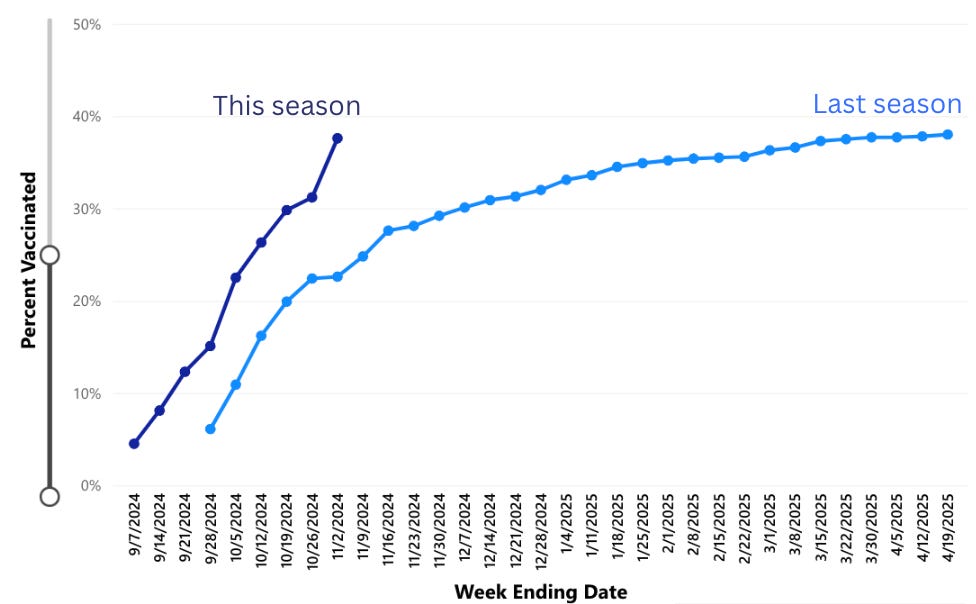
Covid-19 vaccinations are also higher among those over 18 (18% vs. 12%) and across all races/ethnicities and urbanicity. We are seeing a similar story with RSV among pregnant folks. Vaccination coverage is at 31% compared to 18% last year.
Why is this higher than in previous years? Epidemiologists have a few guesses:
HHS vaccination campaign. Millions of dollars were used for a public education campaign about Covid-19 and flu vaccines this fall (although we aren’t seeing any changes in flu coverage).
Familiarity. People are getting more comfortable with the idea of an annual Covid-19 shot. It’s no longer seen as a pandemic, and people aren’t getting information shoved down their throats, causing fatigue and resistance. This is also the second season of the RSV vaccine—women saw that it worked and was safe last year.
Timing of availability. For the first time, Covid-19 shots were approved at the same time as flu and RSV shots. Co-administration is massively convenient.
There is still room for improvement, but these developments are fantastic news.
What to do
I’ve sprinkled some specific recommendations throughout this post, but regardless of what is circulating, what you can do to stay healthy is relatively consistent.
It’s not too late to get vaccinated! Monoclonal antibodies, like those for RSV protection, kick in immediately. Protection from vaccines kicks in after about two weeks, so these can help with holiday parties after Thanksgiving.
Mask up before the holiday to prevent contracting a virus in crowded areas, like at the airport or subway.
Stay home if you feel sick. I know this isn’t fun, but it is the most important way to avoid spreading illness, especially to vulnerable friends or relatives.
Ventilation and filtration help reduce transmission. When you’re together indoors, open a window, use a fan, or turn on an air purifier.
Bottom line
Respiratory season is starting, but the risk of getting sick at Thanksgiving is lower than in the previous four years. Regardless, there are many things you can do to stay healthy and celebrate with loved ones.
Happy Thanksgiving, all. I’m very grateful for this community!
Love, YLE
Your Local Epidemiologist (YLE) is founded and operated by Dr. Katelyn Jetelina, MPH PhD—an epidemiologist, wife, and mom of two little girls. YLE reaches more than 280,000 people in over 132 countries and has a team of 11 whose main goal is to “translate” the ever-evolving public health science so that people will be well-equipped to make evidence-based decisions. This newsletter is free to everyone, thanks to the generous support of fellow YLE community members. To support the effort, subscribe or upgrade below:





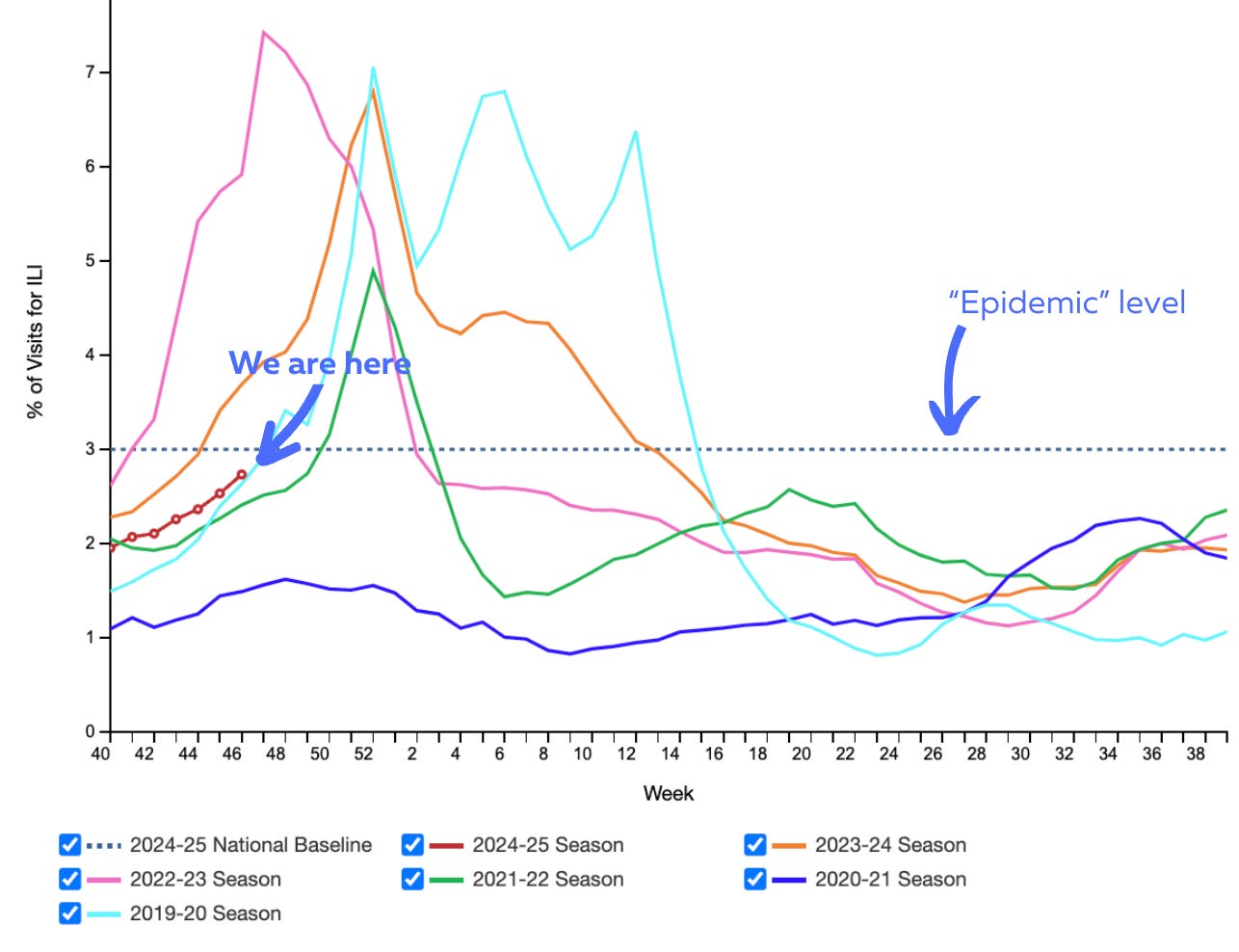

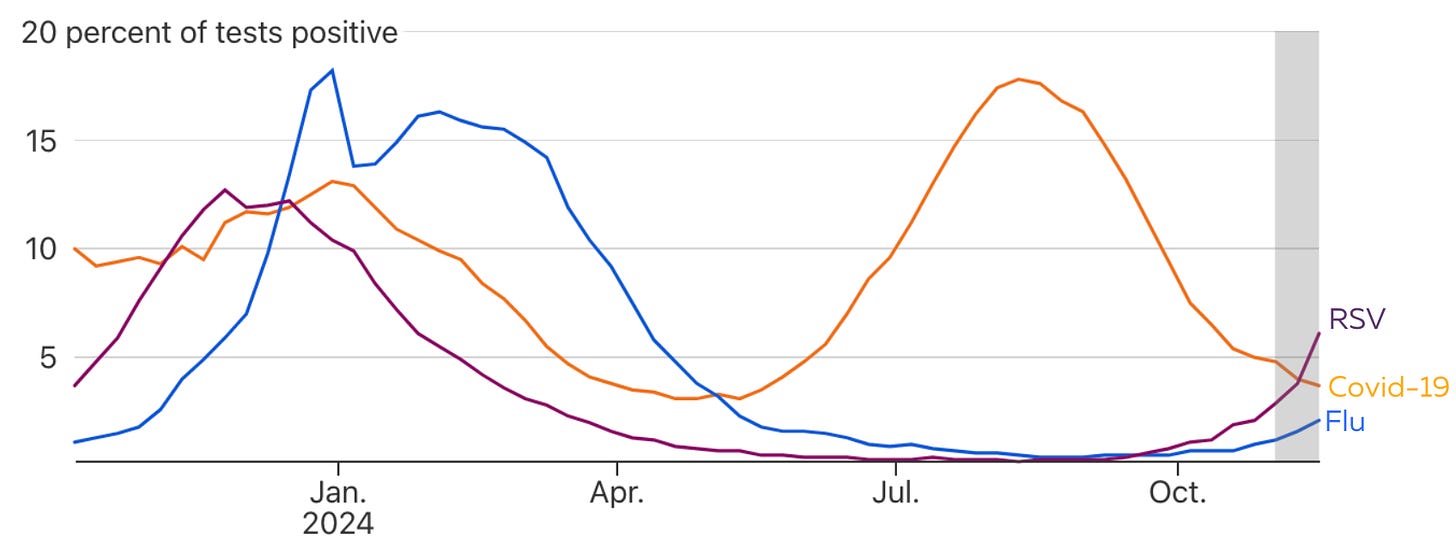
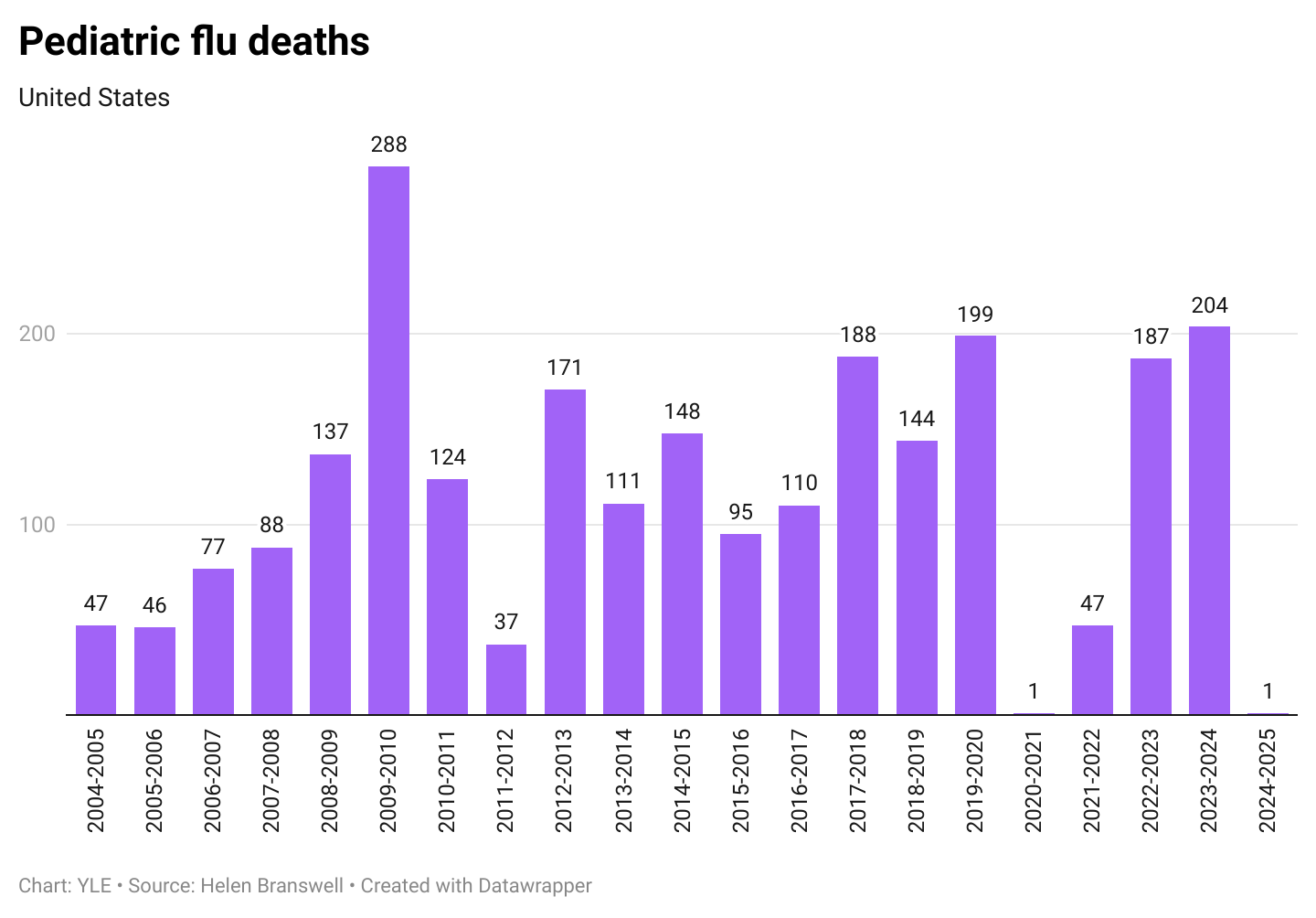
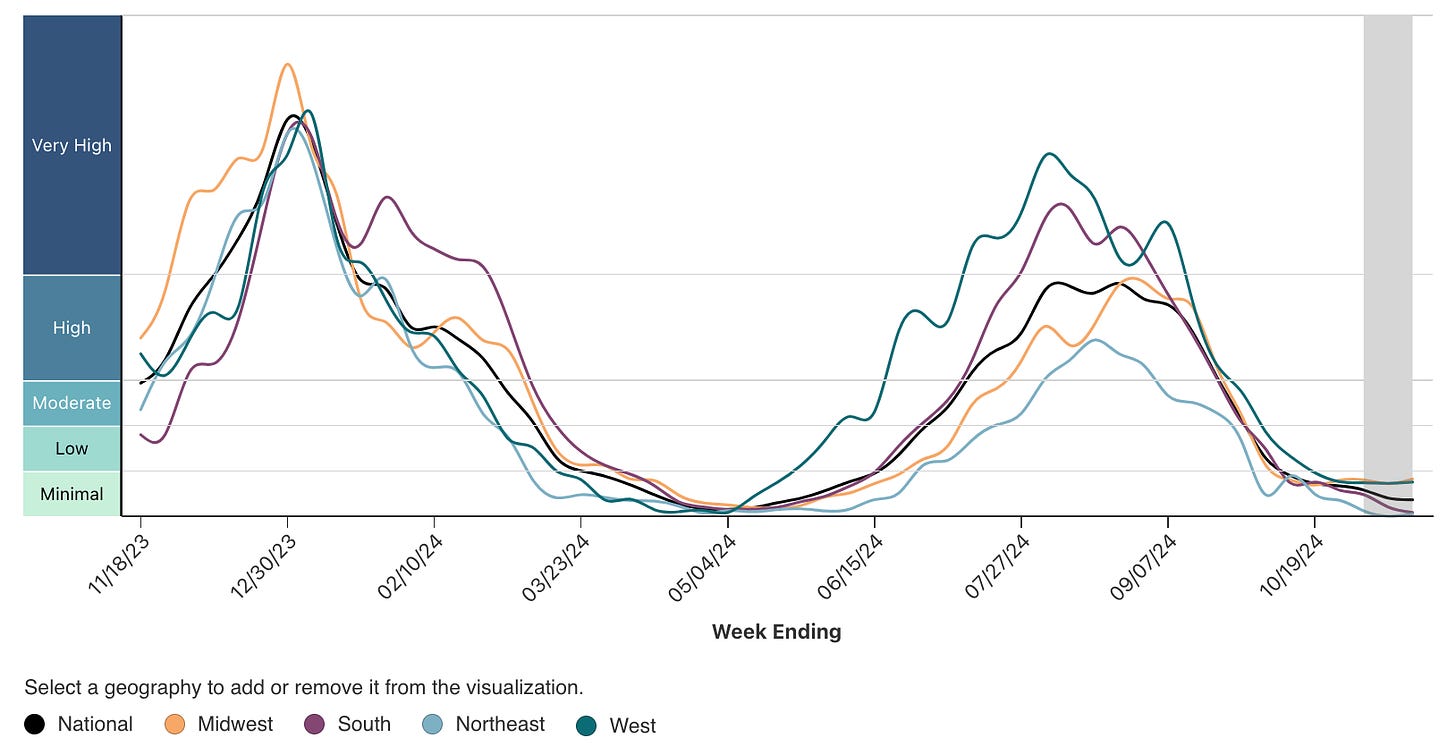





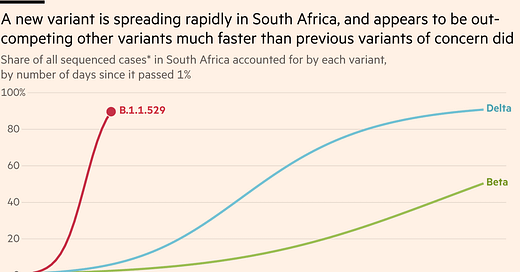

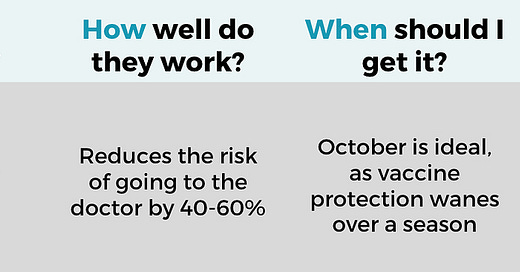

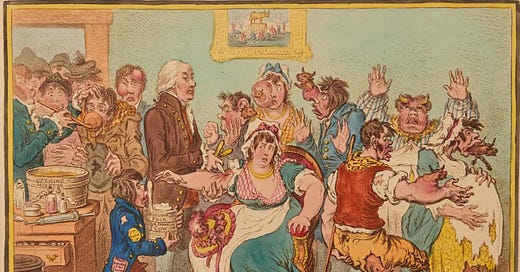

At our home, we are very grateful for you! Happy Thanksgiving to you and yours!
After 41/2 years of avoiding covid, my wife and I caught it together in mid October. We both have had every vaccine and booster offered including the current one at the beginning of September. Let me tell you that while levels may be low, it’s still out there and it’s not pleasant. I don’t want to think about how bad it would have been if we weren’t vaccinated. And after years of wondering if home antigen tests really work, I can assure people that if you have it, you’ll know within minutes.